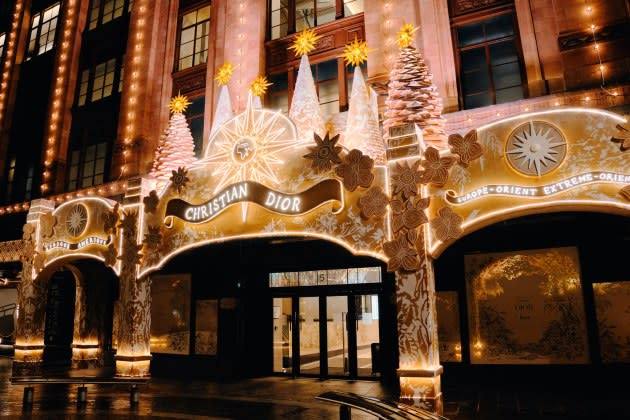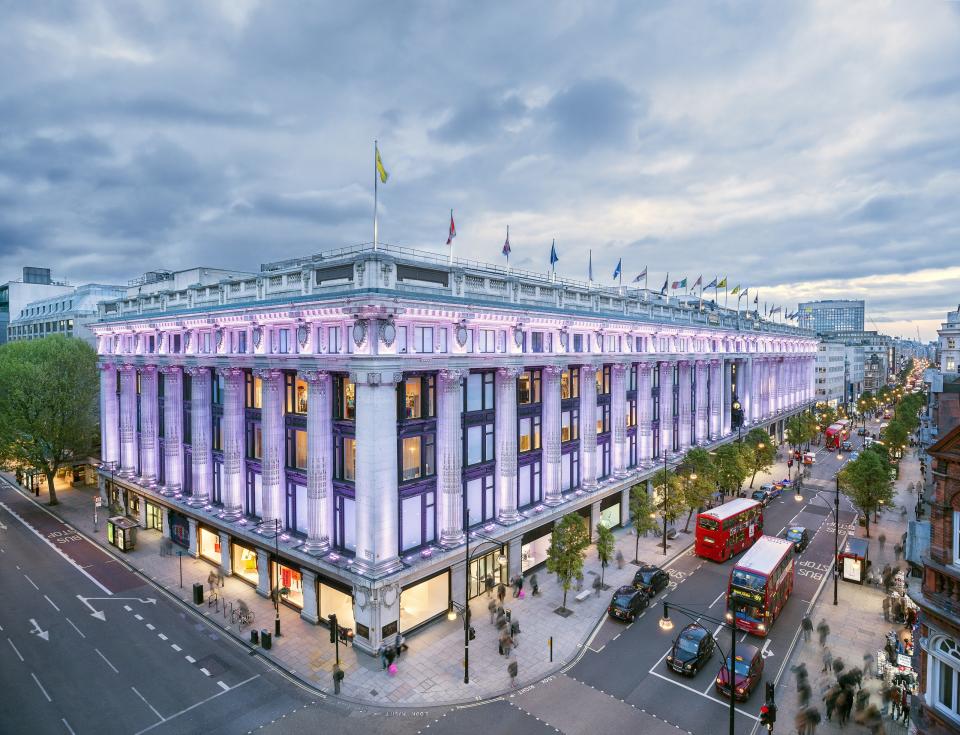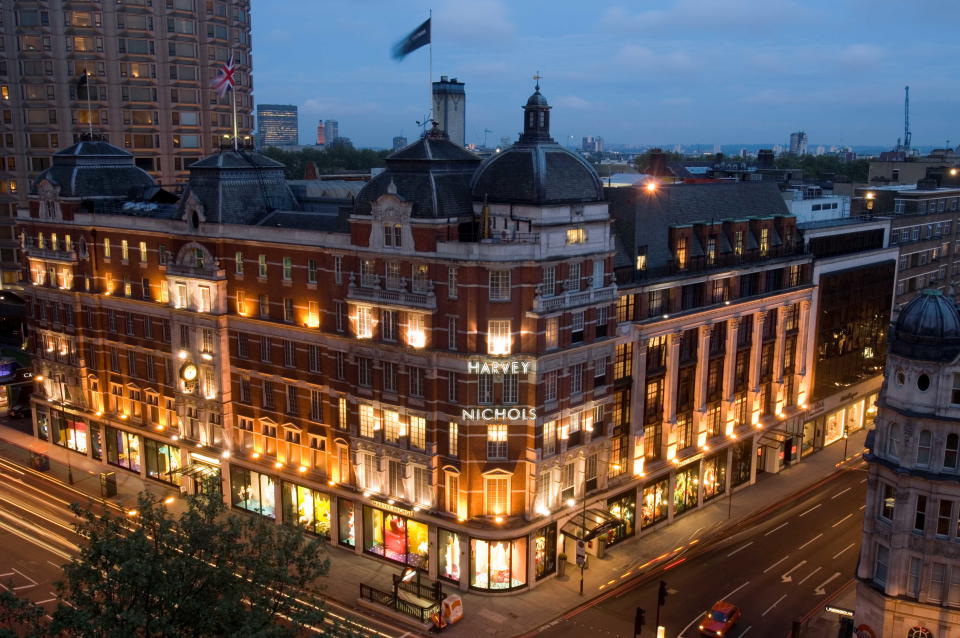The Battle of Britain’s Luxury Department Stores

LONDON — British luxury department stores are having a seesaw summer.
Harrods is up in the clouds with its 2022-23 financial results, recording a 131.3 million pound increase in operating profit, according to records from Companies House for the 52 week period ending January 2023.
More from WWD
UFC, Celio Unite to Take a Jab at Apparel for Gane-Spivac Fight in Paris
Shopping Habits of American Consumers: A Look at In-store Versus Online Purchasing
Fashion Industry Vets Open New Multibrand Boutique in Santa Monica
Harvey Nichols revenues jumped 58 percent to 191.7 million pounds in the 53 weeks to April 2, 2022, but the flagship’s performance is still far behind its pre-pandemic level. Harvey Nichols and Company Ltd., which reflects the performance of its Knightsbridge flagship, showed that the location’s turnover in the same period increased by 111.6 percent to 57.8 million pounds from 27.3 million pounds.
Compared to a bigger recovery on a group level, the flagship’s performance is still far behind its pre-pandemic level: 81.27 million pounds in fiscal 2019-20.
There’s also turnaround at the business as chief executive officer Manju Malhotra steps down at the end of the year and the business takes a new route. The owner, Sir Dickson Poon’s son, Pearson, will take on the role of vice chairman until a new CEO is found.
And on Oxford Street, Selfridges is facing more than 1.7 billion pounds in debt as a result of rising interest rates, and is planning to cut jobs in its head office.
The business was bought by Thailand’s Central Group and the Austrian property company Signa in 2021 for 4 billion pounds, but Selfridges hasn’t jumped back up to its pre-COVID-19 profits yet.
In October 2022, Selfridges reported revenue rising 28 percent to 653.4 million pounds, significantly lower than the 852.9 million pounds the company generated the year before.

Central and Signa’s combined existing portfolio includes 22 luxury department stores and two stores under construction in Düsseldorf and Vienna. They are the owners of KaDeWe, Oberpollinger and Alsterhaus in Germany, and Globus in Switzerland. Central wholly owns Rinascente in Italy, and Illum in Denmark.
As reported, by 2030 the partners are targeting 9 billion euros in total sales from their overall retail portfolio. Over the past 10 years, they’ve plugged 1 billion euros into their stores, and will invest a similar amount in the next few years.
“Overall, luxury department stores have been competing against brand owned stores and direct-to-consumer. This is something that we’re seeing everywhere in the world, but particularly in strong markets like the U.K. where you don’t need to access products through department stores,” said Fflur Roberts, head of luxury goods at Euromonitor International.
Since the pandemic, luxury brands have reshuffled their distribution and wholesale processes, taking back the power of where and how their products are represented out in the world. And for those who have stayed in the U.K.’s high-end department stores, the terms have changed, and brands are asking for more priority and coverage — digitally and on the shop floor.
Harrods’ Instagram account has 1.9 million followers with approximately nine posts per week promoting the brands it carries with original content shot in-house with a team of creatives and stylists.
These posts include brands such as Malone Souliers, Givenchy, De Beers, Paige, Cartier and Dior.
“We remain focused on driving future growth via the curation of exclusive products and experiences that can only be found in Harrods, further enhancements in 2023 [include] new womenswear and furniture rooms as well as the ongoing development of our dining offerings and expansion of our private shopping services,” said Tim Parker, chief financial officer at Harrods.
Research from City Hall suggests that tourism levels to London could surge and beat the record year of 2019, when the city hosted 21.7 million visitors.
Events such as the coronation of King Charles III; the Wimbledon 2023 Championships and Queen Elizabeth II’s Platinum Jubilee and funeral have driven the demand for tourism.
Roberts said while pop-ups in department stores have their successes, they can’t necessarily compete with a brand’s flagship store. And now, many brands are taking a larger-than-life approach, exemplified by Harrods’ installations with LVMH Moët Hennessy Louis Vuitton-owned brands.
In November, Harrod’s teamed up with Dior on “The Fabulous World of Dior,” which included covering Harrods with a facade of a Christmas gingerbread house on its Brompton Road entrance featuring white icing and clouds of sugar as well as a mega-star measuring 17 meters. Meanwhile, 44 windows were dedicated to the brand, along with a café and two pop-up shops.
According to industry sources, the takeover generated more than 25 million pounds in sales, and transformed Dior into the number-one bestselling brand at Harrods. The store declined to confirm any figures, but said Dior was a “top performer” throughout the 2022 festive season.
Cashing in on the success of Dior, Louis Vuitton followed suit with its global collaboration with Yayoi Kusama, taking over 27 Harrods windows adorned with giant colored dots and alive with anamorphic displays, all of which had been designed and made in London, as well as a 15-meter robot statue of the artist installed outside on Hans Crescent, where she’s peering into the third floor of the store.
“There’s nothing in the world that can compete with Harrods as a brand — with tourists in particular, everyone wants to go there,” said Roberts, explaining that the experiential arm of the department store has been a force in driving such robust growth.

Harvey Nichols is just around the corner from Harrods — and it’s a crucial moment for Poon’s department store to level with its competition.
“Change is always a good thing, especially if a retailer or company is not doing so well then getting fresh blood in with some new ideas that really understands the U.K. and London market in particular is really going to benefit the brand,” said Roberts about the appointment of the 29-year-old Poon.
Harvey Nichols was a name on everyone’s lips in London from the late ‘80s to the mid-2000s. It was visited by Princess Diana and name dropped every episode on the popular British sitcom “Ab Fab,” following a PR mogul and magazine fashion director played by Jennifer Saunders and Joanna Lumley, respectively.
Compared to Harrods and Selfridges, through, Harvey Nichols’ focus is unclear.
Harrods leans towards a wealthy crowds shopping for the mega brands in one place, meanwhile Selfridges brims with new brands with a location close to Mayfair and Soho. And Harrod’s is having a moment both IRL and on screen — the Qatar Investment Authority-owned business made a cameo during small talk in Netflix’s royal drama “The Crown,” where the last season featured the department store’s previous owner Mohamed Al-Fayed and his son, Dodi’s rise among royalty and Hollywood.
Best of WWD

